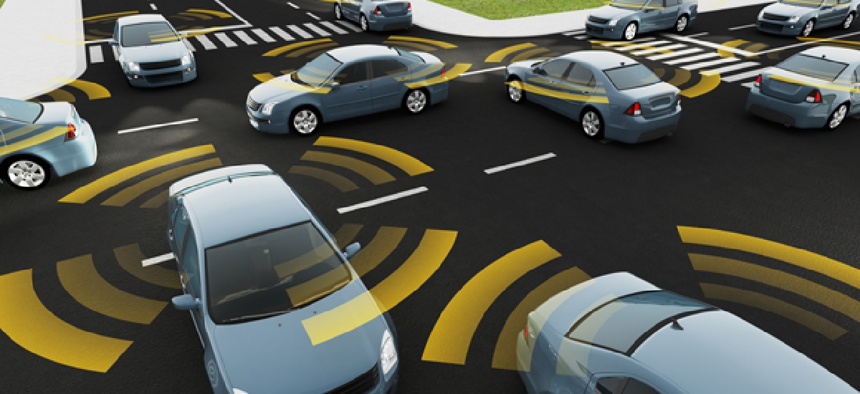Smarter sensors promise cities better parking management

Sidewalk Labs' new low-infrastructure solution offers easy connectivity to monitor urban parking, space by space.
Sidewalk Labs is taking aim at the high cost of collecting parking data with new, low-infrastructure sensor technology.
Announced in late May, the solution has two parts. One is the “Pebble,” a round sensor roughly three inches in diameter that sticks to asphalt. Pebbles have two sensing capabilities: a magnetometer that senses when metal is over it and an optical detector. The sensor is “asleep” until the presence of metal wakes it, said Willa Ng, director of mobility at Sidewalk Labs, Alphabet’s urban innovation organization.
When the magnetometer it triggered, the optical detector then “shoots a beam up and if that beam is interrupted, it knows there’s something on top of it,” Ng said. “The difference [between Pebble and other parking sensors] is that it doesn’t have a constant beam, so … you can set the interval that the sensor wakes up, shoots the beam up and says, ‘Yes, there’s still a car on top of me right now.’” That extends Pebble’s battery life, which keeps costs down.
The second part is the Pebble Gateway, a solar-powered device that can be strapped to a light pole or installed on top of a building. The gateway uses the cellular network so it doesn’t require running new wires or trenching through pavement. Data that the Pebble devices collect is sent to the gateway and then transmitted to databases in the cloud, where users can access the information and run analytics.
“The system uses no cameras or other ways to identify a person or vehicle,” according to a blog post by Ng and Nick Jonas, Sidewalk Labs’ senior creative technologist.
Users – typically city or parking managers – receive data in real time via a dashboard that shows which spaces are occupied and for how long. Each parking space that’s being monitored must have a Pebble device in it. Alerts can also be sent if a car has not moved from a space for a set period of time.
The dashboard also provides summary statistics, such as the percentage of spots occupied at a given time or over the course of a day, week or month. Over time, patterns and trends emerge that managers can use to tweak parking needs.
Circling for parking accounts for up to 30% of cities’ traffic congestion, studies show, so Sidewalk Labs offers an API that would let drivers integrate the Pebble parking data into navigation apps, or cities could integrate it into a signage system to show drivers where parking is available.
“That would reduce the amount of circling looking for a spot, which means that that driver is not frustrated and they’re also not spending time circling with their vehicle putting out emissions,” Ng said.
Conversely, if potential parkers could see in advance that no spots are available, they might decide they are better off taking public transportation or working from home, Ng said.
People have an emotional response to parking and often report problems with availability where there aren’t, said Ng, who worked on parking issues for in her previous jobs with Berkeley, Calif., and the New York City Transportation Department. “They may not have been right where you wanted to go – right in front of the restaurant that you were going to – but it might be around the block or down one block,” she said. “The fact that you don’t know where parking is leads you to believe that there isn’t any.”
Pebble would help address that emotional response with hard data.
Other benefits that cities could see from parking data include creating shared parking zones, such as a daytime business sharing a parking garage with a restaurant that’s open at night. Additionally, it could optimize curb use and generate revenue for cities that use dynamic pricing to charge delivery trucks, building on Smart Zones, powered by Coord, a Sidewalk Labs-incubated company.





